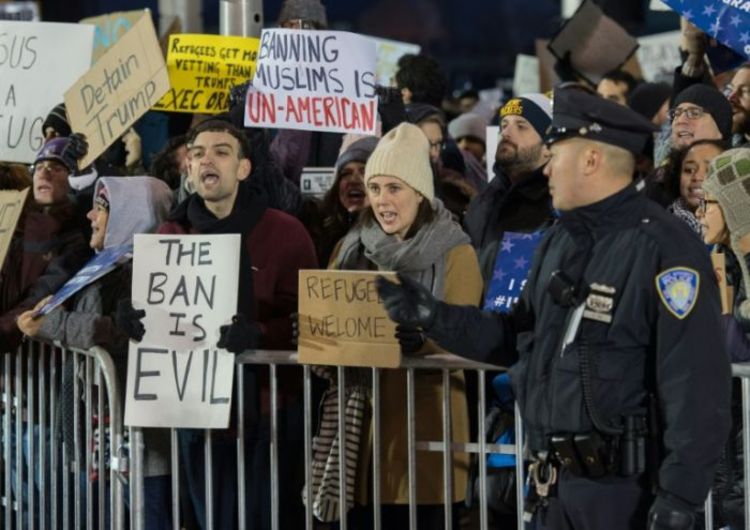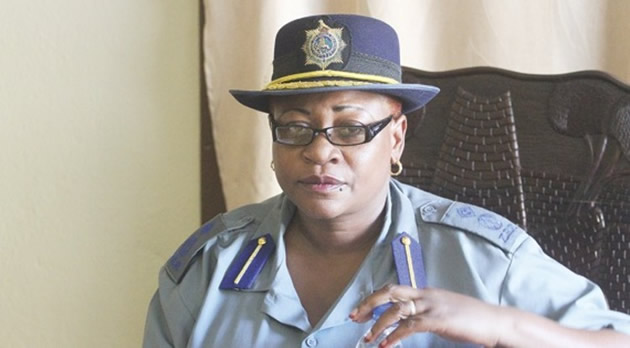Trump’s attempt to ban refugees will hurt Africa


Protesters gather at JFK International Airport, New York, against US President Donald Trump’s executive order to ban travellers from certain Muslim-majority countries. — AFP
An Executive Order issued by US President Donald Trump’s administration on January 27 suspended all refugee admission for 120 days from seven Muslim countries — Iran, Iraq, Libya, Somalia, Sudan, Syria, and Yemen. The political backlash has been severe and US courts have suspended the ban. The Conversation Africa’s Samantha Spooner asked Cristiano d’Orsi (pictured above) to explain the impact on Africa’s refugees if the ban is reinstated.
What are America’s international obligations to take refugees?
The ban doesn’t fit with the US’s international obligations. Because it’s a signatory to the 1967 New York Protocol it’s obliged to accept applications by asylum-seekers and provide them with temporary protection until their claim can be assessed by the relevant authorities. An executive order cannot remove these obligations. The US has also ratified the International Covenant on Civil and Political Rights, which provides for the “equal protection of the law” without any discrimination.
This means that, under its international obligations, it cannot have a targeted ban on asylum-seekers from specific countries. Sometimes there’s confusion around the US’ obligations because it is not part of the Geneva Convention. But this covers a different set of issues: minimum protections, standards of humane treatment, and fundamental guarantees of respect to individuals who become victims of armed conflicts.
How would Trump’s executive order affect Africa’s refugees?
Three of the countries targeted by the executive order are African: Libya, Somalia and Sudan. The situation for Somalis is of the most concern. There are hundreds of Somali refugees living in Kenya that were told they could not travel to the US for resettlement. Some had waited 7-10 years for their resettlement to be approved and organised. In total, the measure adopted by the Trump administration affects up to 26 000 Somali refugees who were hoping to travel from Kenya. This figure refers to both refugees who have already been selected for resettlement and those whose applications are under review. Approximately 3 000 were expected to be resettled from camps.
They are now in a state of limbo. This even though Somalis are a priority nationality for resettlement in the US. Refugees from Somalia take precedence because the situation in the country is considered to be particularly severe or unstable. The US State Department has admitted that “most parts of Somalia . . . are not conducive to safe and sustainable refugee return”.
The situation will only get worse as Kenyan authorities seek to close Dadaab refugee camp and repatriate all Somalis living there by May. This decision still hangs in the balance as the High Court is now challenging the government on its repatriation plans.
The basis of Trump’s executive order is to “keep radical Islamic terrorists out”. Yet experts on terrorism have pointed out that recent attacks in the US have not been from nationals of the countries singled out by the president.
For example, no individual of Somali origin has been involved in any attack in the US. But this didn’t stop Trump labelling Somali refugees in Minnesota — the state with the highest concentration of Somali refugees — as terrorists during his election campaign. Trump’s excuse for this accusation was that in November 2016 a Somali refugee was convicted of being part of a Minnesota “terrorist cell” and sentenced to 35 years in jail.
What can, or should, Africa
do in response?
While she was still head of the African Union commission Nkosazana Dlamini-Zuma described the the order as “one of the greatest challenges” for the continent.
But African countries are limited in what they can do. The most effective steps would be to suspend contracts with US companies operating in African countries. But this would hurt the countries cutting the ties more than it would hurt US corporates.
Nevertheless they could exert some pressure. For example there are contracts worth $206m that American oil companies signed with Algerian authorities in 2016.
And affected African countries could demand that the terms on which America is doing business in Libya through the US-Libya Business Association should be renegotiated. In addition, as some influential media houses in the US have suggested, there is the possibility of stopping Americans from investing again in Somalia and Sudan.
On the diplomatic and security front African countries could demand more information through official channels. Questions on why, for instance, some countries were placed on the list while others were not. For example, Egypt is the only African country with nationals that have been involved in terror attacks in the US — 11 people, and 162 deaths — yet it wasn’t on the list.
In protest, the AU could temporarily close the offices of the AU Permanent Representative to the US. While this may not make much of a difference, it would demonstrate the AU’s discontent over the adopted order.
In addition, there is the United States Africa Command (AFRICOM) responsible for US military operations in Africa and improving security. Despite its formation in 2007, the temporary ban imposed seems to show that not much has changed in the security issue of the continent. Countries could threaten eviction of these forces.
What measures can local governments and refugee agencies put in place to cope with the changes?
Unfortunately potential solutions are few. Refugee agencies cannot force the US to take refugees and so they will need to find sanctuary elsewhere — probably within Africa.
But trying to relocate them to other camps may not be a viable option. Many are overcrowded as sub-Saharan Africa hosts over 25 percent of the world’s refugees. The US, for its part, has taken in just over 2 percent of the global refugee population. In the case of Somali refugees, agencies and governments could request that Kenya delay the closure of Dadaab camp. This could be supported by financial pledges to assist them in its management. Another option could be that refugee agencies attempt to convince other countries already carrying out resettlement programs — such as Germany, Sweden and Brazil — to accept more refugees.
Or they could try and find new countries that would be willing to take on resettlement projects. Unfortunately, it has already been very hard as even the countries that would typically accept refugees are adopting the policy of “Refugees? No thanks.” — theconversation.com
Cristiano D’Orsi is a Research Fellow and lecturer at the South African Research Chair in International Law (SARCIL), University of Johannesburg, South Africa.









Comments